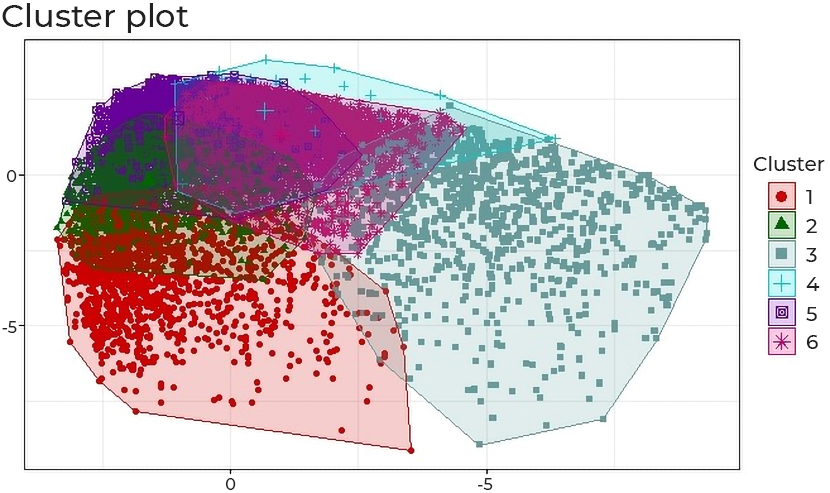Published on November 9, 2020 by Deepak Chaturvedi
Trillions of dollars are processed globally through the 2.8bn credit cards in use. Over 60% of the US population owns credit cards, with an average of four credit cards per person. Quarterly credit card spending is improving gradually to pre-pandemic levels. With the rise of digital wallets and alternative payment systems, it is critical that bankers get the target mix right for campaigns by geography, demographic and financial parameter.
Credit card providers offer a wide range of cards to cover customers ‘spending needs – from hotels and dining, travel and air mile offers, online shopping, electronics, home improvement, clothing and camping tools to corporate spending. Promotional strategies include big-ticket purchase offers of promotional pricing and deferred interest to smaller “spend and get” rewards, and cash-back offers. Prominent merchants also offer some type of additional benefit associated with card issuers in the form of merchant-specific private-label credit cards (PLCCs) or co-branded cards.
In a highly competitive market, card issuers need to engage customers and prospects with the right offer at the right time as never before, to grow revenue and acquire more customers. Industry studies suggest that if a provider fails to exceed customer expectations, after just one negative experience, more than half (61%) of the customers say they would move to a competitor; this number rises to 76% in the case of multiple negative experiences.
The entry of digital wallets from big tech companies has made the competition fierce. Gen-Z and millennial in particular show high rates of adoption of digital wallets. We believe, however, that credit cards are here to stay. US credit card debt crossed the USD1tn mark in 2019, and each household with a credit card carried an average of USD8, 398 in credit card debt
To ensure an effective marketing campaign amid such dynamic, sophisticated and competitive market, five important steps need to be taken:

1. Set goals:
Clearly define the goals of the marketing campaign you want to run – whether you want to increase revenue or re-engage customers, increase sales or build card balance. Chalk out the plan in terms of marketing budget and revenue targets along with an opt-in/opt-out window and offer timelines. It is important at this stage to also consider the frequency and channels of communication, including via direct mail, email, text messages, app-based notifications and social media platforms. The use of digital media should be an integral part of goal setting, as studies suggest that an average user has eight social media accounts and spends 2.5 hours daily on these platforms.
2. Define target audience and segment the market:
Once goals are defined, we need to find the right customers to help us meet these marketing goals. A right customer is one with a high propensity to respond to the campaign. Customer segmentation has proved to be a very powerful tool in identifying such an audience. Customer segmentation is the technique of sub-grouping the market or customers based on similar characteristics. Segmenting customers based on their consumption behavior, spending preference, spending potential and preferred channel of purchase – known as behavioral segmentation – enables curating personalized offers and increases the ROI of the campaign.

A customer’s past spending, classified by product category, utilization, on-us and off-us credit limit (the combined credit limit of all cards, including that of any competitor’s credit card the customer has), and average credit card balance along with other relevant variables, can be used to segment the data. A customer’s preferred channel/s of spending, based on their transaction history, can also be used.
The analysis begins with cleaning the data by removing outliers and treating missing values. After structuring the data, it will be easy to spot certain existing groups:
Based on where customers spend:
-
Retail stores
-
Online/utility bills
-
Everyday spending
-
Hotels, dining or travelling
Based on the average spending ticket size, transaction amount and off-us potential:
-
Frequent spenders with high off-us potential
-
Medium spenders with high off-us potential
-
High-ticket occasional spenders
-
Less frequent spenders with high off-us potential
-
Inactive – short- and long-term
This clearly shows there are similar sub-groups of customers that should be targeted based on their separate spending needs.
Variable selection is an important process that requires a business understanding of the variables; it plays a major role in determining segments. A preliminary analysis of variables as shown above can also provide meaningful insights. We can use some of the variables available as segmentation variables and the remainder when profiling the segments. Once we have selected the segmentation variables, we need to scale the data so the larger variables do not sway the results.
We segment the market based on “K-means clustering” to group customers into homogenous clusters that are mutually exclusive. This is an iterative process conducted to obtain an optimum number of segments within the data. Once we have identified our segments, we profile each segment to understand factors such as its spending behaviors and preferences, demographics, spending level, and income and credit situation.

Source: Acuity Knowledge Partners internal analysis
Based on these clusters, we can devise a clear targeting strategy that focuses on each group’s intrinsic spending behavior to either increase the customer’s wallet share/accelerate their spending/re-activate disengaged customers/provide promotional offers or incentivize the most-valued customers.
3. Design the campaign and specify measures of effectiveness:
The response rate is considered to be the minimum baseline for measuring the effectiveness of any campaign. There are other KPIs as well, such as the profit-to-cost ratio, the click-through rate and the conversion rate.
Creating test and control groups in the segments is considered standard practice in measuring a campaign’s effectiveness. A test group consists of customers who actually receive campaign offers, while a control group is not exposed to any offers during the campaign period, in order to set a baseline. These groups are selected by random sampling in each segment separately, keeping the difference between the test group and the control group statistically significant. Once a proper test-control group is setup in a controlled environment (assuming all other sales-related factors in these groups are the same), virtually anything can be compared to assess the direct or halo impact of the campaign. By creating test-control groups, several touch points can be measured. For example, within one customer segment, we can test how people behave towards different offers or through different channels of communication. This enables us to learn the impact on behavior of several factors in one campaign.
Communication channels such as direct mail, email, messaging, social media and mobile apps can be used to roll out campaigns. Each of these channels has its own benefits and limitations in terms of reach, cost, response rate and conversion rate. The campaign outcome metric also varies from one channel to another. While designing a campaign, it is, therefore, important to assess communication channel’s impact.
4. Create messaging in line with compliance
A marketing campaign’s design is as good as the message it conveys to customers. Thus, it is important to consider factors that resonate with them and increase the campaign’s ROI. Statistical techniques such as A/B testing and experimental design can be used to compare a set of messages and identify the best messages for each group. While we can improve the reach of a marketing campaign by creating catchy and attention-grabbing headings, it is important not to sensationalize the message and only convey what can be backed up and does not mislead customers. Designing campaigns that do not discriminate by, for example, ethnicity, color and age, may be required in certain markets. There may also be other country-specific norms that need to be followed.
5. Ensure seamless campaign execution:
Rolling out a marketing campaign is a collaborative process that needs input from the marketing, finance and risk verticals and requires constant monitoring. Monitoring ensures a campaign can be proactively evaluated, communication can be enhanced and the course corrected, if required.
It is also imperative to deploy the right customer relationship management (CRM) tool that can provide the contact and sales management, workflow and productivity tools required to manage customers and prospects in a seamless manner.
A good campaign execution tool should provide marketing resource management (MRM) capabilities, flexibilities to operate on multiple channels, the ability to create marketing workflow, and tracking and measurement facilities.
A number of options are available in the market, and selecting the right tool for your business can make all the difference – a small organization with a growing business may have needs and a budget very different to those of a global consumer bank. Similarly, a digital wallet-focused organization would have different needs to those of a direct mail-or email-centric traditional bank.
Conclusion:
John Wanamaker, a proponent of advertising early in the 20th century and considered to be a pioneer in marketing once famously said, "Half the money I spend on advertising is wasted; the trouble is I don't know which half." A hundred years later, however, with the advent of software development, data science and statistical analysis techniques, we have the capability and resources to.
How Acuity Knowledge Partners can help:
For over 18 years, Acuity Knowledge Partners has been providing research and analytics services to over 300 buy-side and sell-side firms located across the world. The dedicated data science practice was launched in 2019, supported by 15 years of experience in providing quantitative and technology solutions to our clientele. Acuity’s data science team of over 70 professionals works closely with 220 technologists and 2,000 analysts to provide digital insights by analyzing structured and unstructured data sets.
References:
https://www.salesforce.com/research/customer-expectations/
https://en.wikipedia.org/wiki/John_Wanamaker
Tags:
What's your view?
About the Author
Deepak Chaturvedi has over 7 years of experience in financial services and banking domain in managing credit card portfolios, designing and analyzing marketing campaigns, providing analytics solutions for US credit cards, US retail stores, consumer banking analytics and enhancing customer experience. His key responsibilities at Acuity include developing and implementing analytic solutions and business intelligence dashboards for our financial services clients. Prior to joining Acuity in 2019, Deepak worked as a senior business analyst with a tier-1 global bank.
Like the way we think?
Next time we post something new, we'll send it to your inbox







